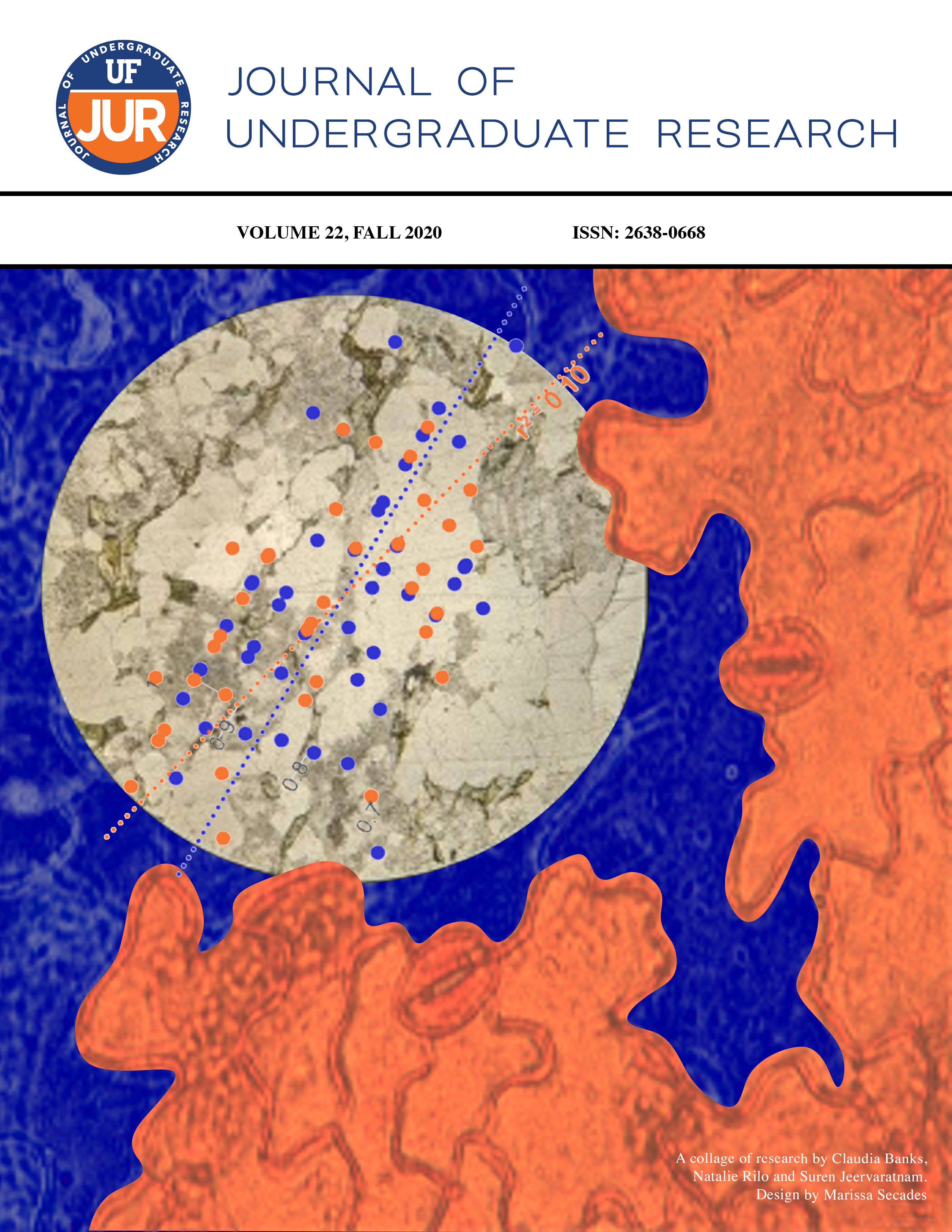Assessing the Validity of Ultrasound Imaging of Wrist Muscle Moment Arms through an Agar Phantom Experiment and In Vivo Case Study
DOI:
https://doi.org/10.32473/ufjur.v22i0.120555Keywords:
biomechanics, medical imaging, capitate, flexor digitorum superficialisAbstract
Joints in the human body utilize torque to create movement, where a force F acts at a distance, r, from a rotation point. In biomechanics, F is generated by muscles acting on the joint, and r is the distance between the joint’s center of rotation (COR) and the muscle line of action. This distance r is known as a geometric moment arm (GMA). Changes in GMAs may be correlated with loss of muscle and hand function in people due to aging, injury, or pathology. To comprehensively evaluate GMAs, efficient and inexpensive methods for measuring them in vivo are needed. Thus, this study explores whether ultrasound is a valid imaging modality for quantifying the GMA of muscles crossing the wrist. An agar-gel phantom was used to determine if distance measurements from 20 ultrasound images of the phantom were accurate compared to a set of four baseline distances. A subsequent in vivo case study explored whether ultrasound could measure GMAs within a human wrist. The capitate bone was defined as the wrist’s COR due to its central location in the joint, and the measured GMA was defined between this COR and the flexor digitorum superficialis (FDS) muscle. Both studies returned data that exhibited low measurement variability over consecutive days and provided reasonable proof that ultrasound can accurately measure wrist GMAs.
Keywords: biomechanics, medical imaging, capitate, flexor digitorum superficialis
Downloads
Published
Issue
Section
License
Some journals stipulate that submitted articles cannot be under consideration for publication or published in another journal. The student-author and mentor have the option of determining which journal the paper will be submitted to first. UF JUR accepts papers that have been published in other journals or might be published in the future. It is the responsibility of the student-author and mentor to determine whether another journal will accept a paper that has been published in UF JUR.

